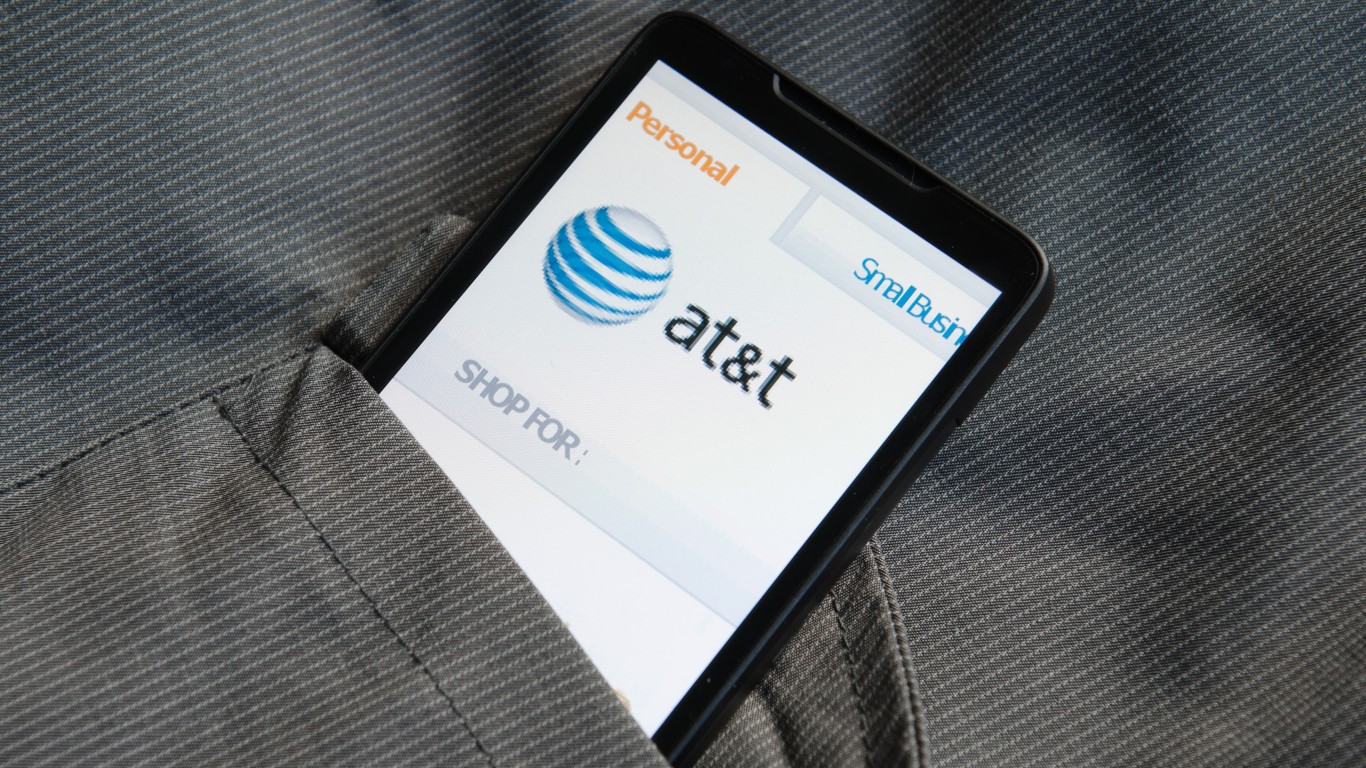Telecom & Wireless
Can AT&T Keep Up With Verizon's Dividend Hike?

Published:
Last Updated:

AT&T Inc. (NYSE: T) may seem like a boring company. Its stock has done little in recent years, and the company’s bloated balance sheet carries $175 billion or so in long-term debt. What AT&T does have going for it is that it has a long history of raising its dividend. That yield is now above 7%.
The question to ask looking ahead, particularly in a muted and slowing recovery from the pandemic, is just how much of a dividend hike can be expected. A more pointed question to consider is whether AT&T should stop hiking its dividend and focus on working its acquisition-driven debt down to more reasonable levels.
There is also a burning question about why AT&T has such a higher dividend yield than the current 4.2% yield paid out by Verizon Communications Inc. (NYSE: VZ). AT&T’s market cap is now $205 billion, since its stock has been weak, and Verizon’s market cap is $248 billion, as its stock has remained strong. While $124 billion in long-term debt is not low, it’s better than AT&T’s debt load.
Verizon’s dividend announcement back on September 3 was just a 2% hike, and that marked its 14th year of dividend hikes.
AT&T has been much more aggressive over the past decade in acquisitions than Verizon, and its balance sheet is more bloated. It acquired Time Warner just in time for the pandemic-induced instant recession, and DirecTV has been feeling subscriber pressure as the rise of cord-cutters has become much more prevalent than five years ago. Verizon’s acquisitions of AOL and Yahoo have been far less costly than AT&T’s acquisitions.
AT&T recently had an update from new CEO John Stankey at a Goldman Sachs conference noting that the company is expected to have a payout rate in the 60% range. The company is also targeting continued net debt reduction as an effort to bolster the balance sheet and to make its borrowing terms better. AT&T remains confident that it can generate strong cash flow that will support its dividend and debt reduction despite limited visibility about the long-term economic impact and duration of the coronavirus.
While around 60% is the same that had been discussed multiple times during this recovery, the most recent dividend hike was by only 2% to $2.08 per share on an annualized basis. The consensus estimate is $3.18 in earnings per share in 2020 and $3.22 in 2021, so the company’s ability to target a dividend hike at a floor of 60% would generate $1.91 in annualized dividends. Targeting a 1% dividend payout hike to $2.10 would be a payout ratio of roughly 66% of trailing earnings.
The credit ratings agencies tend to see Verizon as having less leverage than AT&T. Standard & Poor’s rates AT&T as BBB and Moody’s rates it as Baa2, both of which are still investment grade and come with stable outlooks. Verizon carries a Baa1 rating at Moody’s and a BBB+ rating at S&P, and their outlooks were both listed as positive.
Verizon’s stock comes with a much more modest (but still high) dividend yield. AT&T shares were last seen down about 26% so far in 2020. Verizon is still down year to date as well, but only by about 3%.
AT&T generally hikes its dividend in a December announcement, and any hike this time around should be modest. AT&T’s ongoing capital allocation generally keeps calling for continued modest annual increases in its dividend.
Wall Street is not very active in its own analyst calls on AT&T. Scotiabank cut its rating to Underperform from Sector Perform with an unenthusiastic $30 target price at the end of August. At the start of that month, Deutsche Bank maintained a Buy rating but trimmed its target price to $37 from $38.
At $28.90 per share, AT&T has a 52-week range of $26.08 to $39.70, and the Refinitiv consensus analyst target price is $32.40. Verizon’s current $59.85 share price is within a 52-week range of $48.84 to $62.22, and the consensus target price is $61.17.
Start by taking a quick retirement quiz from SmartAsset that will match you with up to 3 financial advisors that serve your area and beyond in 5 minutes, or less.
Each advisor has been vetted by SmartAsset and is held to a fiduciary standard to act in your best interests.
Here’s how it works:
1. Answer SmartAsset advisor match quiz
2. Review your pre-screened matches at your leisure. Check out the advisors’ profiles.
3. Speak with advisors at no cost to you. Have an introductory call on the phone or introduction in person and choose whom to work with in the future
Thank you for reading! Have some feedback for us?
Contact the 24/7 Wall St. editorial team.